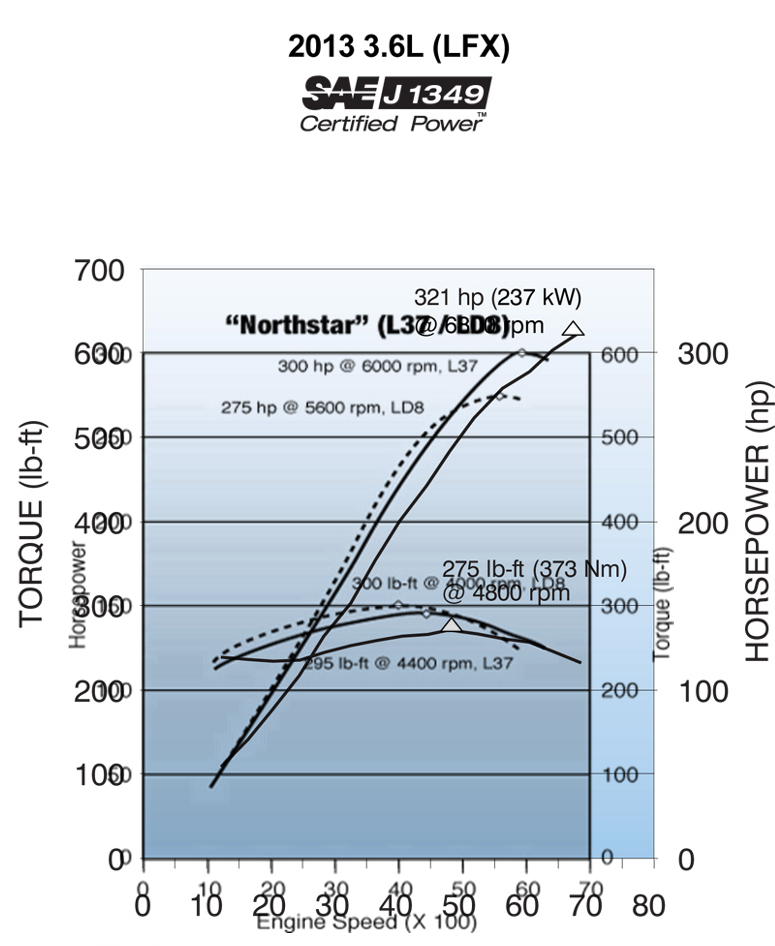During our recent Cadillac Chat we debated which engine brings the most torque — the highly boosted 2L Turbo 4, or the 3.6L V6?
Here are the engine dyno curves, both for the Cadillac ATS:
This first graph is for the LTG, the 2L Turbo 4. It hits a ‘shelf’ of 260 lb ft of torque at 1700 rpm and holds that level until over 5500 rpm.
The 3.6L VVT DI normally aspirated engine hits a higher max torque at 4800 RPM of 275 lb ft. It appears to slope up from around 240 lb ft to 275 lb feet and back to near 240 lb ft at redline.
After 5500 rpm the 3.6L heads on to peak HP while the Turbo is out of breath, so the V6 clearly has the ‘nod’ at redline. My impression comparing the two charts by sight is that the 3.6L stays ahead all the way through the rpm band — what do you think?
Here is a layered comparison — the graphs are difficult to compare because they do not have constant x and y axes. I used GIMP to stretch one to align with the other in order to give an apples to apples comparison:
This makes it harder to read the scales, but what it suggests is that below around 3500 rpm the LTG 2L Turbo makes more torque; after that the 3.6L normally aspirated LFX makes more torque. With an automatic transmission and torque converter, the LFX likely stays above 3500 rpm at open throttle regardless. With variable valve timing, the 3.6L manages a heroic torque curve down low and good power up high.
Finally, as a nod to the V8 fans, here is a comparison between the two Northstar FWD variants, overlayed together, against the 3.6L RWD VVT V6.
What this shows is a) this is a messy way to discuss and b) the 4.6L Northstar in either variant pulls more torque, earlier, and holds an advantage until past 6K RPM when the smaller 3.6L V6 finally wins only at peak hp.
As a note, the Northstar graphs were not done to the same J1349 standard, which can effect the graphs slightly.






Looking at the LTG 2.0 Turbo torque curve, it abruptly stops increasing at 260 lb.ft. @ 1700 RPM and continues flat through 5500 RPM. This appears to be a factor of reaching the max boost programmed and holding until the curve was on the way down. I believe this engine has much more (maximum) torque available if boost was allowed to reach a higher level. It also could be a factor of a mechanical restriction in the engine like intake, exhaust or head airflow and could also be attributed to camshaft specs and/or variable valve timing limits. Just my thoughts…